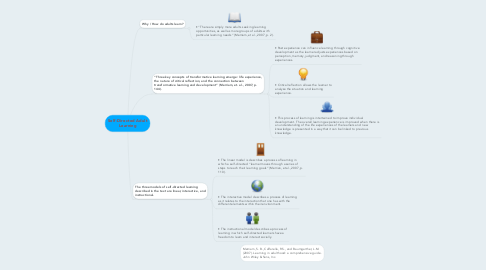Self-Directed Adult Learning
by Pamela Tanner

1. Why / How do adults learn?
1.1. • “There are simply more adults seeking learning opportunities, as well as more groups of adults with particular learning needs” (Merriam, et al., 2007, p. 2).
2. “Three key concepts of transformative learning emerge: life experience, the nature of critical reflection, and the connection between transformative learning and development” (Merriam, et. al., 2007, p. 144).
2.1. • Past experience can influence learning through cognitive development as the learner adjusts experiences based on perception, memory, judgment, and reasoning through experiences.
2.2. • Critical reflection allows the learner to analyze the situation and learning experience.
2.3. • This process of learning is intertwined to improve individual development. The overall learning experience is improved when there is an understanding of the life experiences of the learners and new knowledge is presented in a way that it can be linked to previous knowledge.
3. The three models of self-directed learning described in the text are linear, interactive, and instructional.
3.1. • The linear model is describes a process of learning in which a self-directed “learner moves through a series of steps to reach their learning goals” (Merrian, et al., 2007, p. 110).
3.2. • The interactive model describes a process of learning as it relates to the interaction that one has with the different elements within their environment.
3.3. • The instructional model describes a process of learning in which self-directed learners have a freedom to learn and interact socially.
4. Merriam, S. B., Caffarella, R.S., and Baumgarther, L.M. (2007). Learning in adulthood: a comprehensive guide. John Wiley & Sons, Inc.


